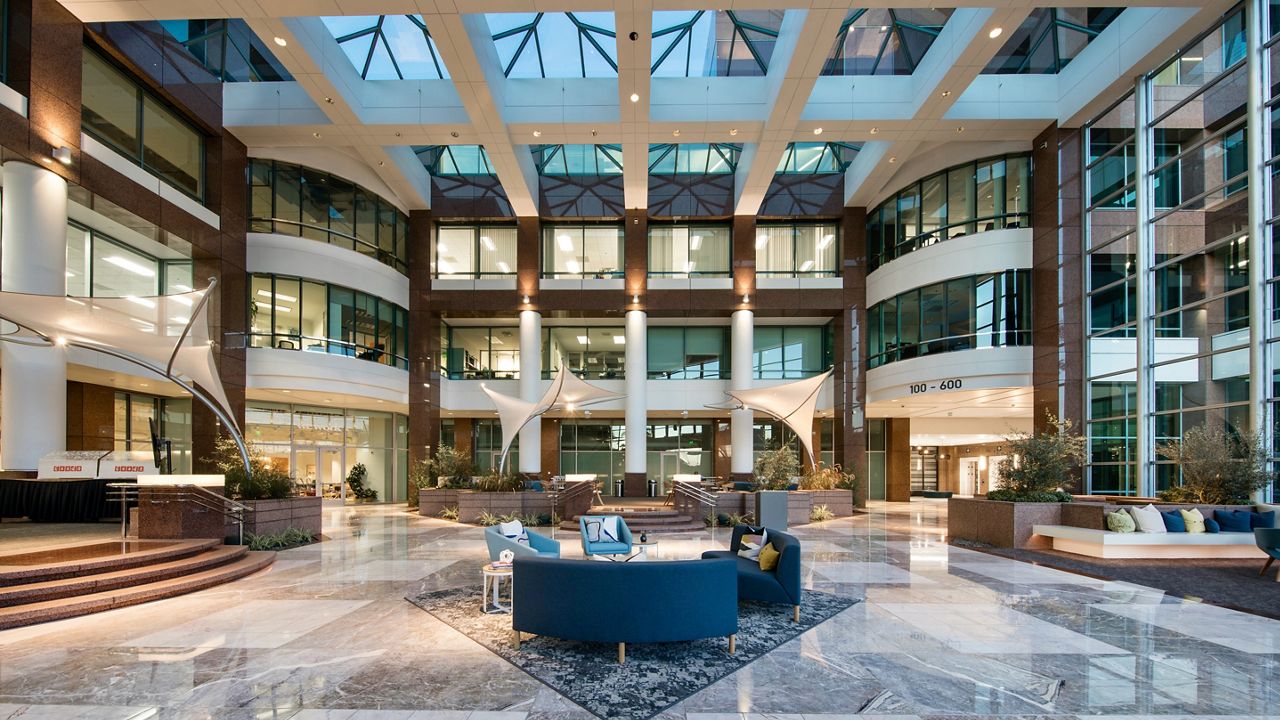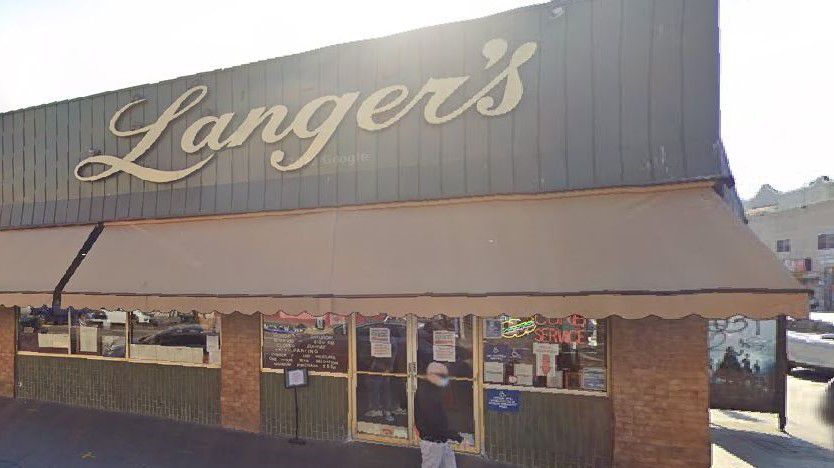ORANGE COUNTY, Calif. — Workers at the 100 Bayview office campus in Newport Beach and Orange City Square business center in Orange may not ever need to use their hands again when they enter those office buildings.
Granite Properties, the owner of the buildings, has installed several new hands-free features in the buildings as a way to bring in and welcome tenants and their workers as they slowly come back to the office.
When workers come back to the office, they'll notice that the buildings have more automatic doors and some doors have a foot-operated door opener or toe hold.
The bathrooms have touchless fixtures. The sink faucets and soap dispensers are automatic, and toilets flush itself after each use.
Workers will also begin to notice better lighting and air quality. Granite has installed UV lighting and integrated new technology in the building’s HVAC system that continuously purifies the air and mostly eliminates germs like the coronavirus, company officials said.
And when workers need to use their hands to open a door, the handles are covered with a NanoSeptic skin like a plastic sleeve that continuously cleans itself after each use.
Even the elevators, where capacity is limited to only two to four people, have the NanoSeptic skin on the buttons. Granite is also exploring a mobile application that can tell the elevator system the users desired floor destination, for a completely touchless experience.
These are among some of the new safety precautions Granite has installed and implemented at its buildings in Orange County and Los Angeles as a way to keep tenants and their workers safe, healthy, and most importantly, boost their morale and confidence as a safe environment to work.
The $10 million investment is part of the company’s Inspire Wellness initiative incorporating new technology and design solutions as long-term improvements to its office portfolio. Granite owns and manages more than 1.7 million square feet of office buildings in Southern California, including two in Orange County, one in Burbank, and another in Glendale.
"Early on, right after the shelter in place orders, we created a task force and immediately started researching best-in-class practices throughout and creating a safer environment for our customers to return to," said Granite Properties Senior Managing Director Jason Purvis.
But some see the new health design improvements as overkill. Others see it as a necessity that building owners must do now to keep tenants in their buildings as many businesses weigh whether to keep paying for costly office space or save money and keep workers working from home.
“We’re all living a new normal now,” JLL Senior Managing Director Jeff Ingham said. “I think a majority of businesses want to go back to the office, and there are some that are not sensing a big need to go back to the office. There are still a few companies that are worried about litigation and liability.”
The office market has been impacted since the beginning of the coronavirus pandemic. With many states, including California, implementing a shelter in place order to further prevent the spread of the coronavirus that has killed more than a million people worldwide, many companies ditched their office headquarters and had employees work from home.
In the past six months, the work-at-home experiment, as some have called it, has some companies now questioning whether they actually need office space or less space for their workers to be productive, commercial real estate experts said.
The work-from-home trend is expected to pick up, lowering demand and increasing vacancy in office buildings in the U.S. in the years to come, according to a study by commercial real estate firm Cushman & Wakefield. The report released on September 22 predicts office vacancy in the U.S. could rise to as high as 17 percent in the next five years. Pre-COVID-19, the U.S. office vacancy sat at 13.2 percent, according to the report.
The study further expects the work-from-home trend to continue, with businesses either shifting to a permanent home experience or a hybrid model, in which workers will come into the office for two or three days and work from home the rest of the week.
“More remote workers lead to less demand for office space per employee,” the Cushman & Wakefield report stated.
Orange County’s office vacancy remains at 12.2 percent. However, the county’s unemployment rate went from 3.6 percent in January to 14.5 percent. The office market is already experiencing a reduction in rent and a slowdown in leasing activity, with some companies taking a wait-and-see approach and signing shorter leases.
Commercial real estate firm, JLL, has found that many businesses with near-term lease expirations are delaying decisions by signing short-term leases.
“The average term of an office lease was five years pre-COVID,” Ingham said. “Now, it’s one to two-year leases.”
Newmark Knight Frank Senior Managing Director Jennifer Frisk said she believes only a small amount of companies will ditch their office space and have employees work from home.
Newmark recently surveyed 300 business clients and found that 70 percent believe they will come back to work next year and "needing the same amount or more office space," she said. Only 10 percent of clients surveyed will continue to work from home.
She said while companies like Granite are investing heavily in upgrades, most building owners and landlords don't see the need. Tenants will look at an upgraded HVAC system as a key amenity, but she said building owners are better off providing certain concessions to tenants.
"They think this [pandemic] is short-lived," Frisk said. "I think upgrading the HVAC and air quality and airflow are here to stay, but I think landlords see toe holds and other types of significant improvements are not worth the money or investment."
Still, with the current situation of more people either working from home or wanting to remain working at home, some property owners, landlords, and even businesses have retrofitted their buildings and office space to lure workers back to the office.
Purvis of Granite Properties said what the coronavirus has done to the office industry is accelerate a lot of underlying trends such as more health and wellness features that some building owners were already incorporating into their buildings out to the forefront.
Purvis said when the pandemic hit and shelter in place orders were implemented, the company's portfolio was only averaging about 20 percent physical occupancy. That has picked up in recent months, he said, and rent collection has been averaging 90 percent.
"Our customers are very cautious about the health and well-being of their employees," he said. "So we see a slow return back to the office."
He added it is still too early to tell if that will have a significant impact on building occupancy. But speaking with tenants and clients, he said many are itching to get back to the office or adapting a flex or hybrid model.
Once local ordinances are lifted, and more companies begin to come back to work, Purvis said his company's buildings are ready.
"We know it's going to be staggered over time, but we're here to welcome them back when they are prepared to do so," he said.










